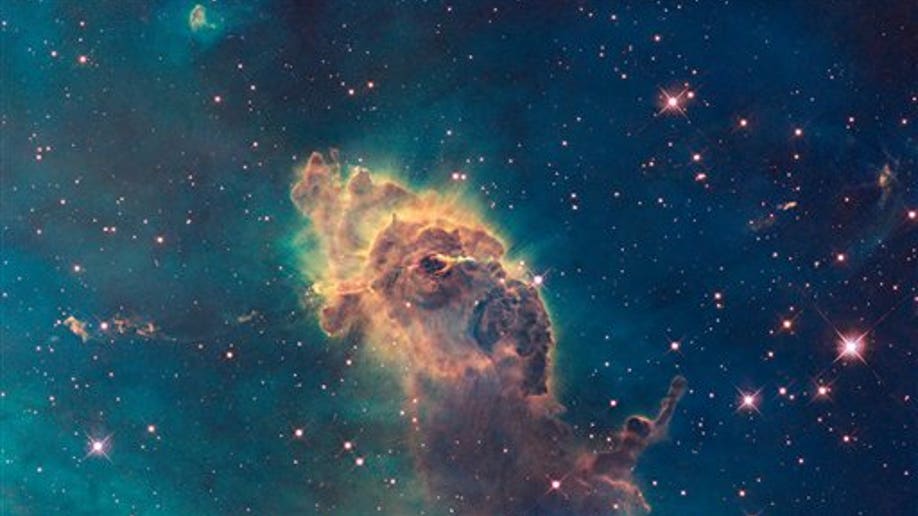Looking at Heaven
{{#rendered}} {{/rendered}}
The Butterfly Nebula, located in our Milky Way galaxy, is about 3,800 light-years away in the constellation Scorpius. The "wings" stretch for over two light-years. (Photo: AP/NASA) (AP2009)

The Carina Nebula, where stars are being born 7,500 light-years from Earth. The interaction between hydrogen and ultraviolet light gives the nebula its red and purple color. (Photo: AP/NASA) (AP2009)
This photograph of galaxy cluster Abell 370 demonstrates gravitational lensing, or a curve in spacetime that causes light to be deflected. (Photo: AP/NASA) (AP2009)
Jupiter is 2.5 times the mass of all the other planets in the Solar System combined. (Photo: AP/NASA) (AP2009)
Barred Spiral Galaxy NGC 6217 is part of the Ursa Major constellation, 6 million light-years from Earth. (Photo: AP/NASA) (AP2009)
Omega Centauri, a star cluster 16,000 light-years from Earth, contains stars more than 10 billion years old. (Photo: AP/NASA) (AP2009)
Five galaxies, known as Stephan's quintet, cut across time, with young blue stars and aging red stars together coexisting in space. (Photo: AP/NASA) (AP2009)
